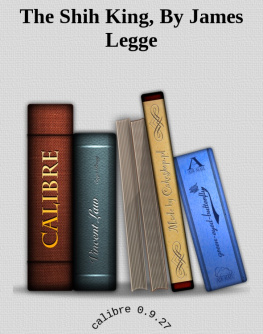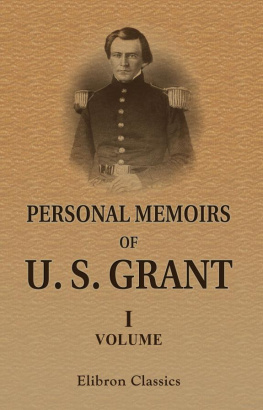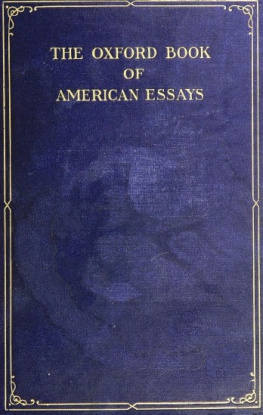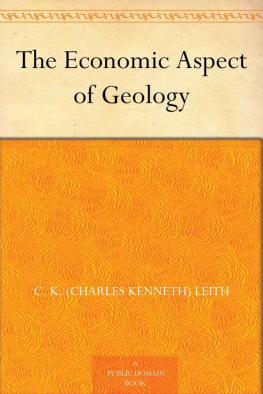Richmond Leigh - Where I Wasnt Going
Here you can read online Richmond Leigh - Where I Wasnt Going full text of the book (entire story) in english for free. Download pdf and epub, get meaning, cover and reviews about this ebook. year: 2010, genre: Science fiction. Description of the work, (preface) as well as reviews are available. Best literature library LitArk.com created for fans of good reading and offers a wide selection of genres:
Romance novel
Science fiction
Adventure
Detective
Science
History
Home and family
Prose
Art
Politics
Computer
Non-fiction
Religion
Business
Children
Humor
Choose a favorite category and find really read worthwhile books. Enjoy immersion in the world of imagination, feel the emotions of the characters or learn something new for yourself, make an fascinating discovery.
- Book:Where I Wasnt Going
- Author:
- Genre:
- Year:2010
- Rating:3 / 5
- Favourites:Add to favourites
- Your mark:
- 60
- 1
- 2
- 3
- 4
- 5
Where I Wasnt Going: summary, description and annotation
We offer to read an annotation, description, summary or preface (depends on what the author of the book "Where I Wasnt Going" wrote himself). If you haven't found the necessary information about the book — write in the comments, we will try to find it.
This book was converted from its physical edition to the digital format by a community of volunteers. You may find it for free on the web. Purchase of the Kindle edition includes wireless delivery.
Library : Science Fiction
Formats : EPUB
ISBN : 9781153659994
Where I Wasnt Going — read online for free the complete book (whole text) full work
Below is the text of the book, divided by pages. System saving the place of the last page read, allows you to conveniently read the book "Where I Wasnt Going" online for free, without having to search again every time where you left off. Put a bookmark, and you can go to the page where you finished reading at any time.
Font size:
Interval:
Bookmark:


Published: 1963
Type(s): Short Fiction, Science Fiction
Source: http://www.gutenberg.org/etext/31116
- Prologueto an Analogue (1961)
http://www.feedbooks.com
Strictly for personal use, do not use this file for commercialpurposes.
Transcriber's Note:
This etext was produced from Analog Science Fact& Fiction October and November 1963. Extensive research did notuncover any evidence that the U.S. copyright on this publicationwas renewed.
I had the life of anearthman made;
But I met aspaceman and got way-laid
I went where I wasn'tgoing!
M aking his wayfrom square to square of the big rope hairnet that served asguidelines on the outer surface of the big wheel, Mike Blackhawkcompleted his inspection of the gold-plated plastic hull, with itsalternate dark and shiny squares.
He had scanned every foot of the curved surface in this firstinspection, familiarizing himself completely with that which othermen had constructed from his drawings, and which he would now takeover in the capacity of chief engineer.
Mike attached his safety line to a guideline leading to thesouth polar lock and kicked off, satisfied that the lab was readyfor the job of turning on the spin with which he would begin histhree months tour of duty aboard.
The laws of radiation exposure set the three-month deadline toservice aboard the lab, and he had timed his own tour aboard tostart as the ship reached completion, and the delicate job ofturning her was ready to begin.
U.N. Space Lab One was man's largest project to date in space.It might not be tremendous in size by earth standards ofconstruction, but the two hundred thirty-two foot wheel representedsixty-four million pounds of very careful engineering and assemblythat had been raised from Earth's surface to this thirty-six-hourorbit.
Many crews had come and gone in the eighteen months since thefirst payload had arrived at this orbitbut now the first of thescientists for whom the lab was built were aboard; and the pick ofthe crews selected for the construction job had been shuttled upfor the final testing and spin-out.
Far off to Mike's left and slightly below him a flicker of flamecaught his eye, and he realized without even looking down that theretro-rockets of the shuttle on which he had arrived were slowlyputting it out of orbit and tipping it over the edge of the longgravitic well back to Earth. It would be two weeks before itreturned.
Nearing the lock he grasped the cable with one hand, slowinghimself, turned with the skill of an acrobat, and landed catlike,feet first, on the stat-magnetic walk around the lock.
He had gone over, minutely, the inside of the satellite beforecoming to its surface. Now there was only one more inspection jobbefore he turned on the spin.
Around this south polar hub-lock, which would rotate with thewheel, was the stationary anchor ring on which rode free both thestat-walk and the anchor tubes for the smaller satellites thatserved as distant components of the mother ship.
Kept rigid by air pressure, any deviation corrected by pressuretanks in the stationary ring, the tubes served both to keep thesmaller bodies from drifting too close to Space Lab One, andprevented their drifting off.
The anchor tubes were just over one foot in diameter, weighingless than five ounces to the yardgray plastic and fiber, air-rigidfingers pointing away into spacebut they could take over twothousand pounds of compression or tension, far more than needed fortheir job, which was to cancel out the light drift motion caused bycrews kicking in or out, or activities aboard. Uncanceled, thesemotions might otherwise have caused the baby satellites to comenudging against the space lab; or to scatter to the stars.
There had been talk of making them larger, so that they mightalso provide passageway for personnel without the necessity forsuiting up; but as yet this had not been done. Perhaps later theywould become the forerunners of space corridors in the growingcomplex that would inevitably develop around such a center of man'sactivities as this laboratory in its thirty-six hour orbit.
At the far end of the longest anchor tube, ten miles away andbarely visible from here, was located the unshielded,remote-controlled power pile that supplied the necessary energy forthe operation of the wheel. Later, it was hoped, experimentalresearch now in progress would make this massive deviceunnecessary. Solar energy would make an ideal replacement; but asyet the research was not complete, and solar energy had not yetbeen successfully harnessed for the high power requirements of theLab.
Inside this anchor tube ran the thick coaxial cable that fedthree-phase electric power from the atomic pile to the ship.
At the far end of the second anchor tube, five miles off inspace, was Project Hot Rod, the latest in the long series ofexperiments by which man was attempting to convert the sun'sradiant energy to useful power.
At the end of the third anchor tube, and comparatively near theship, was the dumpa conglomeration of equipment, used and unusedbooster rocket cases, oddments of all sorts, some to be installedaboard the wheel, others to be used as building components of otherprojects; and some oddments of materials that no one could havegiven a logical reason for keeping at all except that they "mightbe useful"all held loosely together by short guidelines to ananchor ring at the tube's end.
Carefully, Mike checked the servo-motor that would maintain thestationary position of the ring with clocklike precision againstthe drag of bearing friction and the spin of the hub on which itwas mounted; then briefly looked over the network of tubes beforeentering the air lock.
Inside, he stripped off the heavy, complicated armor of anarticulated spacesuit, with its springs designed to compensate forthe Bourdon tube effect of internal air pressure against the vacuumof space, appearing in the comfortable shorts, T-shirt, and light,knit moccasins with their thin, plastic soles, that were standardwear for all personnel.
He was ready to roll the wheel.
Feeling as elated as a schoolboy, Mike dove down the centralaxial tube of the hub, past the passenger entrances from the rim,the entrances to the bridge and the gymnasium-shield area, to theengineering quarters just below the other passenger entrances fromthe rim, and the observatory that occupied the north polar sectionof the hub.
The engineering quarters, like all the quarters of the hub, werethirty-two feet in diameter. Ignoring the ladder up the flat wall,Mike pushed out of the port in the central axis tunnel and droppedto the circular floor beside the power console.
Strapping himself down in the console seat, he flipped theswitch that would connect him with Systems Control OfficerBessandra Khamar at the console of the ship's big computer,acronymically known as Sad Cow.
"Aiee-yiee, Bessie! It's me, Chief Blackhawk!" he saidirreverently into the mike. "Ready to swing this buffalo!"
Font size:
Interval:
Bookmark:
Similar books «Where I Wasnt Going»
Look at similar books to Where I Wasnt Going. We have selected literature similar in name and meaning in the hope of providing readers with more options to find new, interesting, not yet read works.
Discussion, reviews of the book Where I Wasnt Going and just readers' own opinions. Leave your comments, write what you think about the work, its meaning or the main characters. Specify what exactly you liked and what you didn't like, and why you think so.













